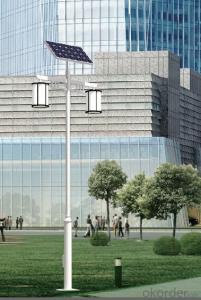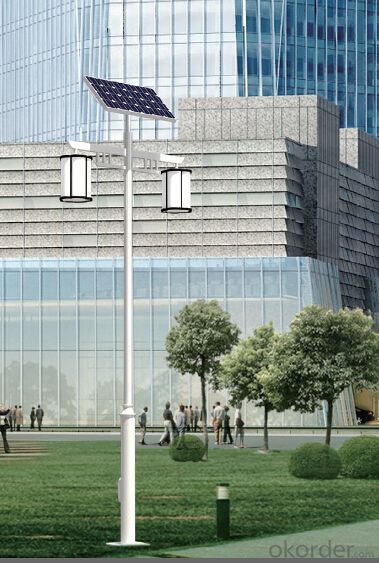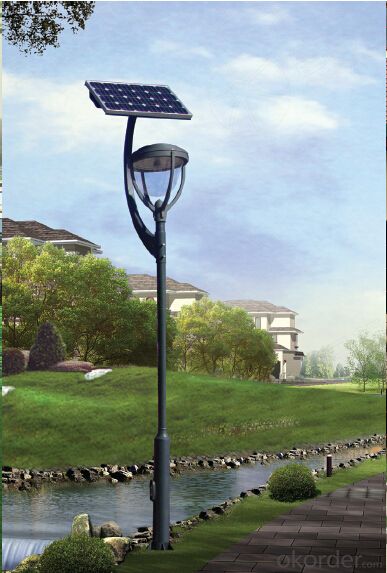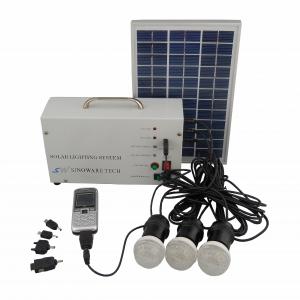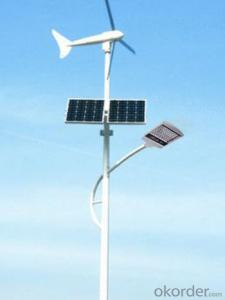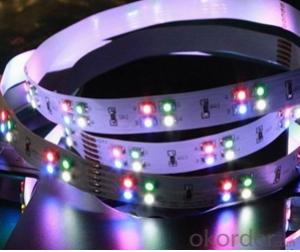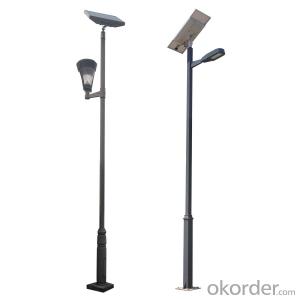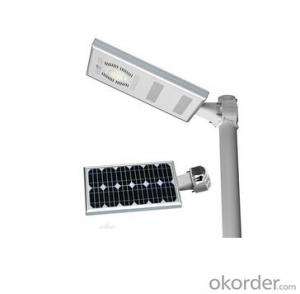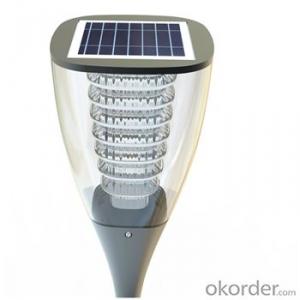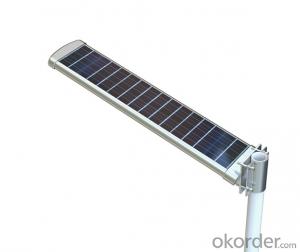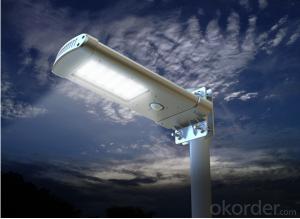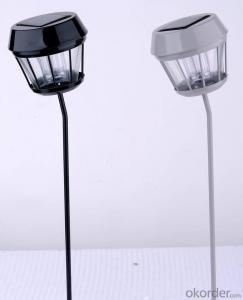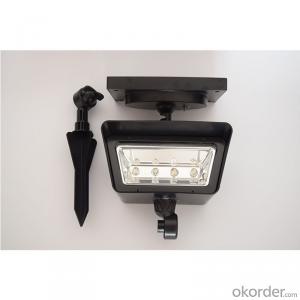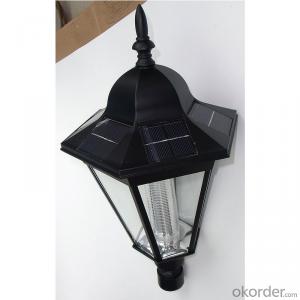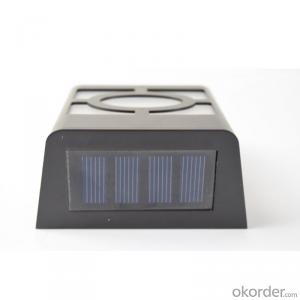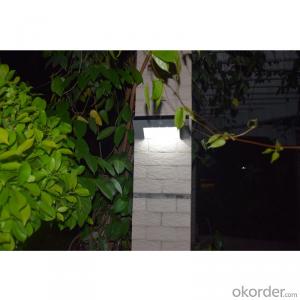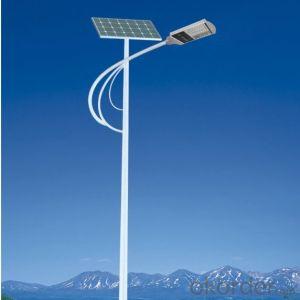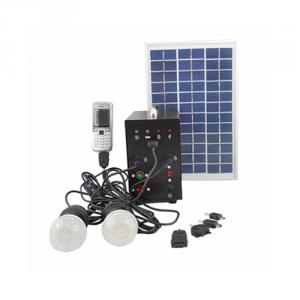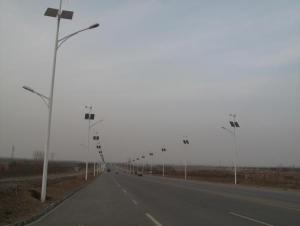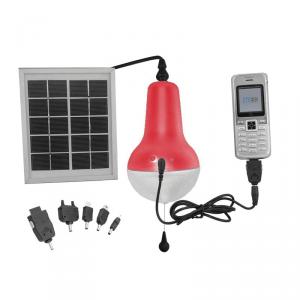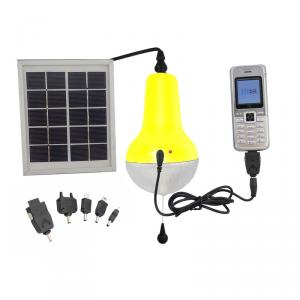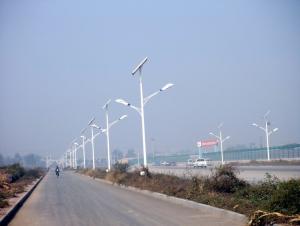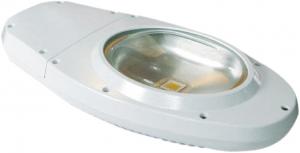Solar Light Bulbs Outdoor Standard Photovoltaic Solar Garden Light
- Loading Port:
- Tianjin
- Payment Terms:
- TT OR LC
- Min Order Qty:
- 5 set
- Supply Capability:
- 100 set/month
OKorder Service Pledge
OKorder Financial Service
You Might Also Like
1. Structure of Solar Garden Light
Solar Street light is composed of LED light source, battery, solar panel, controller and lamp pole. It makes use of the sunlight as energy supply: in daytime, the solar panel makes charge the battery, at night the battery offers power supply to street light. There is no need for complex and expensive pipe installation and maintenance of the street light; then it is easy to make adjustment for the layout of street light. Once one light doesn’t work, the others in the same area won’t be affected, for the solar street light works separately and can’t result in the whole line fault.
2. Main Features of Solar Garden Light
colloid storage battery or LFP storage battery,
scientific controller for charging and discharging control;
which helps extend the lifetime to 5-10 years and reaches the same lifetime as the whole light products
and avoids trouble of frequent changing storage battery and related costs.
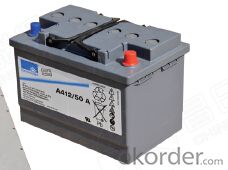
high effect LED light source: lightening effect is 100% better than normal energy saving lamp,
and the lifetime can be extended til 100,000 hours.
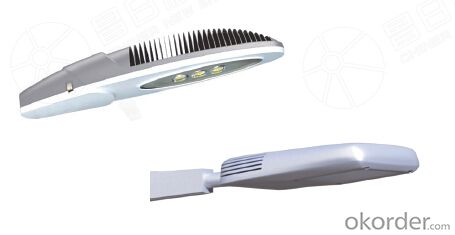
lamp pole: light and long, with aluminium profile, easy for transportation and installation, ensuring longer lifetime for use.
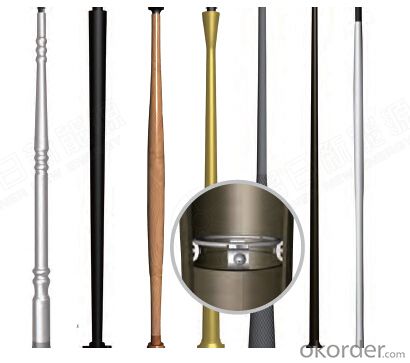
all-weather lightening model function:
adjust power output of LED light source according to electricity collected during the daytime

durable waterproof controller: water resistance protecting level up to IP68, assuring controller lifetime up to 5 years.
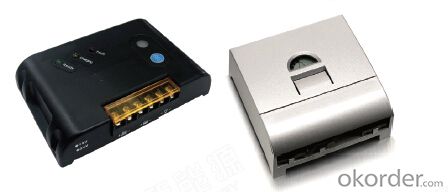
3. Solar Garden Light Images
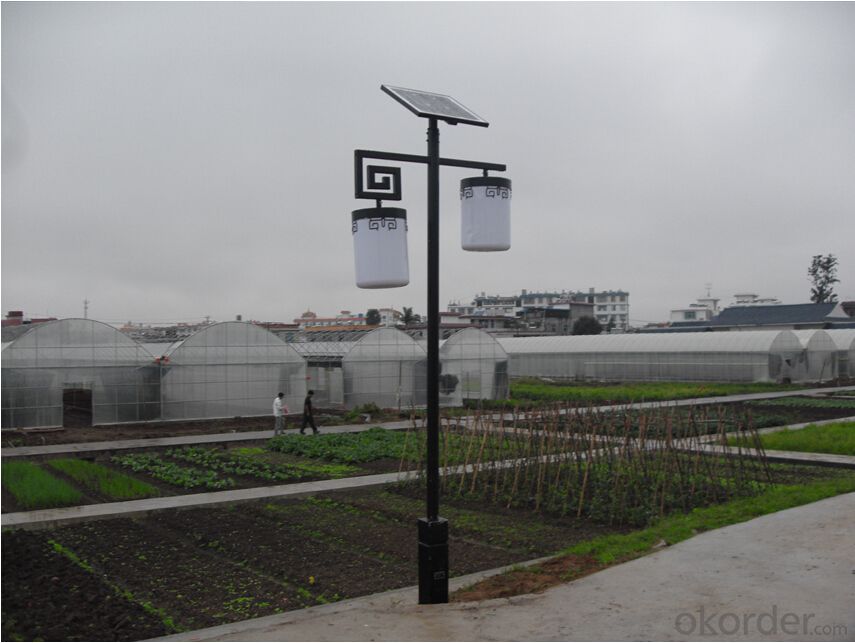
4. Solar Garden Light Specification
No fixed specification and contact with us for more info.
5. FAQ
1)How to choose the appropriate site for the solar street light?
You'd better instal the solar street light on the side of the road where there is no shade of the tree leaves and the solar panels can get enough sunlight for long time, because the street light depends on sunlight as source for charge the battery.
2) How long should clean the solar street light?
Twice a year, that is to say every six month for removing the dust from the solar panel. But it is forbidden to pour water directly from top to bottom.
- Q: Can solar lights be installed on fences and walls?
- Yes, solar lights can be easily installed on both fences and walls.
- Q: Are solar lights resistant to saltwater corrosion?
- Yes, solar lights are generally resistant to saltwater corrosion. Most solar lights are designed with materials that can withstand exposure to saltwater without corroding or deteriorating. However, it is always recommended to check the specifications of a specific solar light model to ensure its suitability for saltwater environments.
- Q: How do I customize the settings of solar lights?
- In order to customize the settings of your solar lights, it is typically necessary to consult the user manual or instructions provided by the manufacturer. However, the following are some general steps that can be followed: 1. Find the solar light: Locate the specific solar light you wish to customize and ensure that it is positioned in an area where it receives an adequate amount of sunlight throughout the day. 2. Access the settings: Most solar lights have a control panel or switch that allows access to the settings. This panel is usually situated on the back or underside of the light. 3. Familiarize yourself with the options: Acquaint yourself with the available customization options. Common settings include an on/off switch, different levels of brightness, motion sensor sensitivity, and timer settings. 4. Make adjustments to the settings: Utilize the buttons or switches provided on the control panel to modify the desired settings. Refer to the instructions in the user manual to navigate through the options and implement the necessary changes. 5. Test and observe: Following the customization of the settings, test the solar light to ensure that the modifications have been correctly applied. Observe its behavior during the night or in various lighting conditions in order to determine if further adjustments are required. Keep in mind that the customization options may vary depending on the specific model and brand of your solar lights. If you encounter any difficulties or have specific questions regarding the customization process, it is always advisable to consult the manufacturer's instructions or contact their customer support for assistance.
- Q: How do I prevent damage to solar lights during extreme weather conditions?
- To avoid any harm to your solar lights in severe weather, there are multiple actions you can take: 1. Properly secure the lights: Make sure the solar lights are firmly attached to the ground or another surface. Use stakes, screws, or suitable fixtures to keep them in place. This will prevent them from being blown away or knocked down by strong winds. 2. Opt for durable materials: When purchasing solar lights, choose models made from sturdy and weather-resistant materials like stainless steel or heavy-duty plastic. These materials are more likely to endure extreme weather conditions without sustaining damage. 3. Safeguard the solar panels: During inclement weather, the solar panels are the most susceptible part of the lights. Clean the panels regularly to remove any dirt, debris, or snow accumulation. Additionally, consider installing a protective cover on the panels during storms or heavy snowfall to prevent potential damage. 4. Store the lights during severe weather: If you anticipate extreme weather conditions, temporarily remove the solar lights and store them indoors until the weather improves. This significantly reduces the risk of damage from strong winds, hail, heavy rain, or snowstorms. 5. Maintain the lights regularly: Conduct routine inspections of your solar lights to identify any signs of damage or wear. Promptly replace any cracked or damaged parts to prevent further deterioration. Additionally, check the connections and wiring to ensure they are secure and protected from moisture. 6. Install lightning protection: If you reside in an area prone to thunderstorms, installing a lightning protection system can safeguard your solar lights. This system will divert potential lightning strikes away from your lights, reducing the risk of damage. 7. Be mindful of extreme heat: Although solar lights are designed to withstand outdoor conditions, excessive heat can still cause harm. Avoid placing the lights in direct sunlight for extended periods, especially during scorching summer days. This will prevent overheating and potential damage to the internal components. By following these preventive measures, you can significantly minimize the risk of damage to your solar lights in extreme weather conditions, ensuring their longevity and functionality.
- Q: Can solar lights be used for outdoor wedding venues or ceremonies?
- Yes, solar lights can certainly be used for outdoor wedding venues or ceremonies. They are a great eco-friendly option that can provide a charming and romantic atmosphere. Solar lights can be used to illuminate pathways, decorate trees or shrubs, highlight specific areas, or even create a beautiful backdrop. They are easy to install and operate without the need for electrical wiring, making them a convenient choice for outdoor events.
- Q: How do solar lights handle electromagnetic interference from vehicles?
- Solar lights are generally not affected by electromagnetic interference (EMI) from vehicles. This is because solar lights are designed to work independently of any external power source, including the electrical systems of vehicles. Solar lights use photovoltaic panels to convert sunlight into electricity, which is stored in batteries for later use. The internal circuitry of solar lights is specifically designed to filter out any EMI that may be present in the environment. This ensures that the solar light functions properly and is not affected by any interference caused by vehicles or other sources. Additionally, solar lights are typically installed in outdoor environments, away from the immediate vicinity of vehicles. This further reduces the chances of any EMI from vehicles affecting the performance of solar lights. In conclusion, solar lights are designed to handle electromagnetic interference from vehicles and other sources, ensuring that they continue to operate efficiently and provide reliable lighting.
- Q: Can solar lights be used in areas with high levels of air pollution?
- Solar lights can still be used in areas with high levels of air pollution, although their effectiveness may be reduced. Air pollution can block some of the sunlight that the solar panels need to convert into electricity, which can lead to reduced charging and operating times for the lights. However, solar lights are designed to be efficient and can still function in areas with some level of air pollution. It is important to regularly clean the solar panels to remove any dust or particles that may accumulate and further hinder their performance. Additionally, using high-quality solar lights with efficient panels can help mitigate the impact of air pollution on their functionality.
- Q: Do solar lights have adjustable brightness levels for different ambiance settings?
- Indeed, there are numerous solar lights available with the capability to adjust their brightness levels to suit various ambiance settings. Several solar lights are equipped with multiple brightness options, enabling you to personalize the lighting according to your preferences and the desired atmosphere. Typically, these brightness levels can be modified using a switch or button on the light itself. Opting for a lower brightness level will create a gentler and more soothing lighting environment, whereas selecting a higher brightness level will provide a more intense and utilitarian lighting alternative. This characteristic facilitates effortless adaptation of the solar lights to diverse occasions or moods, whether you seek a warm and intimate setting or a brighter and more functional lighting solution.
- Q: What is the average lifespan of a solar light battery?
- The average lifespan of a solar light battery typically ranges from 1 to 2 years, depending on factors such as the quality of the battery, usage patterns, and weather conditions.
- Q: Are solar lights suitable for parking lots?
- Yes, solar lights are suitable for parking lots. They are a cost-effective and environmentally-friendly solution that can provide sufficient lighting for parking lots, enhancing safety and visibility. Solar lights are easy to install and maintain, and they can operate independently without the need for electrical wiring or power supply. Additionally, solar lights can be customized to meet the specific lighting requirements of parking lots, ensuring optimal illumination throughout the area.
Send your message to us
Solar Light Bulbs Outdoor Standard Photovoltaic Solar Garden Light
- Loading Port:
- Tianjin
- Payment Terms:
- TT OR LC
- Min Order Qty:
- 5 set
- Supply Capability:
- 100 set/month
OKorder Service Pledge
OKorder Financial Service
Similar products
Hot products
Hot Searches
Related keywords
